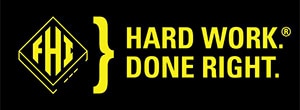Why the Smartest Supply Chain Leaders Are Replacing Traditional Warehouse Hiring in 2025
If the last five years have taught supply chain leaders anything, it’s that agility is no longer a competitive advantage—it’s a requirement. And nowhere is that more apparent than in the warehouse.
From fluctuating volumes and constrained labor pools to rising costs and changing customer expectations, warehouse operations have become the pressure valve of the entire supply chain. To keep pace, forward-thinking leaders are moving away from the traditional warehouse hiring model and reimagining their approach to workforce management altogether—often through warehouse outsourcing.
Here’s why.
The Labor Equation Has Changed—Permanently
Traditional warehouse hiring was built for a world with more predictability—steady demand, abundant labor, and long hiring cycles. That world no longer exists.
Today, supply chain leaders are grappling with:
- Volatility in demand driven by e-commerce surges, seasonal shifts, and geopolitical disruption
- A shrinking labor pool, especially for second and third shifts, and in high-demand regions
- Rising costs associated with recruiting, onboarding, and turnover
- Compliance and safety requirements that are increasingly complex and resource-intensive
Under these conditions, the in-house hiring model struggles to keep up. It’s expensive, slow to scale, and difficult to optimize across a network of facilities. This has led to an industry-wide rethink of how labor is sourced and managed, with more leaders turning to 3PL warehouse management partners for support.
From Hiring to Workforce Strategy
In 2025, the smartest supply chain executives aren’t just filling open roles—they’re building workforce strategies that align with business goals.
Rather than focusing solely on internal headcount, they’re embracing hybrid labor models that incorporate external partners, managed service providers, and data-driven planning. These models are designed to deliver:
- Scalability to meet peak volume without burning out core teams
- Flexibility to shift resources as business needs evolve
- Accountability from partners with skin in the game and aligned incentives
- Visibility through real-time reporting on performance, productivity, and safety metrics
This shift from a hiring-centric approach to a workforce-centric one is helping leaders drive efficiency, mitigate risk, and create more resilient operations.
Technology Is an Enabler—But Not the Whole Story
It’s tempting to think automation is the silver bullet. While warehouse automation and robotics are playing an increasing role in fulfillment, they’re not a one-size-fits-all solution.
Most distribution environments still require a significant human component. But the expectations for that labor are changing.
Today’s warehouse workers need to be cross-trained, tech-savvy, and safety-conscious. They also need to be part of a system that prioritizes retention, continuous improvement, and productivity—not just brawn.
Progressive leaders are using technology to support this new workforce model:
- Labor management systems and predictive analytics are guiding staffing decisions
- Productivity dashboards are aligning performance with incentives
- Workforce engagement tools are improving communication, safety, and morale
These tools are only effective, though, when paired with the right labor strategy—often enhanced by warehouse outsourcing partners who understand the operational nuances of your environment.
A Leadership Mindset Shift
Perhaps the most important shift isn’t technological or operational—it’s cultural.
The traditional view of warehouse labor as transactional is being replaced with a more strategic lens. Labor is no longer a cost center to minimize but a performance driver to optimize.
As supply chains become more complex, leaders are recognizing the value of workforce partners who bring not only people but process, technology, and accountability to the table.
They’re asking new questions:
- Can this model scale with our network growth?
- Are we spending time managing people or managing outcomes?
- How do we make labor a competitive differentiator?
In this environment, 3PL warehouse management is becoming a preferred solution for supply chain executives who demand agility without sacrificing quality.
Where to Go from Here
Warehouse hiring isn’t going away—but how it’s done is changing fast. In a high-stakes environment where speed, accuracy, and adaptability are everything, traditional approaches just aren’t cutting it.
The smartest supply chain leaders in 2025 are not just reacting to labor challenges—they’re proactively reengineering how work gets done in the warehouse.
If you’re rethinking your own approach, download the “2025 Industry Playbook HR & Operations Executives Can’t Afford to Ignore.” It outlines the strategic frameworks, metrics, and considerations behind the shift—and what it means for the future of your operation.
At FHI, we’ve spent more than 30 years working alongside some of the country’s largest distribution networks, helping them navigate workforce complexity with a focus on safety, performance, and adaptability. As a managed labor provider, we’ve seen firsthand how a more strategic approach to warehouse staffing can unlock greater efficiency and resilience. While every operation is unique, one thing remains constant: the need for labor solutions that evolve with the demands of modern supply chains.

To learn more about FHI,
visit us online at www.FHIWorks.com

